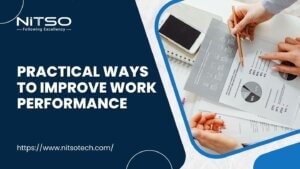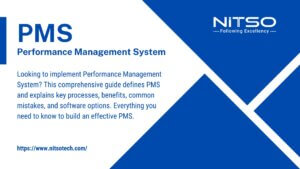Do you find yourself struggling to make the most out of performance feedback sessions? Providing effective feedback is a critical component of employee development and organizational success, yet it’s often a challenging task for managers and leaders.
In today’s fast-paced and dynamic work environment, the ability to deliver constructive and meaningful feedback can be a game-changer. Effective performance feedback not only supports employee growth but also fosters engagement, motivation, and alignment with organizational goals.
According to a survey by the Society for Human Resource Management (SHRM), 92% of employees believe that negative feedback, when delivered appropriately, can improve their performance. However, only 26% of employees feel that the feedback they receive is truly helpful in aiding their development.
This gap highlights the importance of mastering the art of performance feedback. By adopting a comprehensive and empowering approach, you can transform feedback sessions into powerful catalysts for personal and professional growth, ultimately driving organizational success.
In this comprehensive guide, we’ll explore ten strategic ways to make your performance feedback beneficial, impactful, and effective. From fostering open communication to celebrating progress, we’ll provide actionable insights and best practices to help you navigate the complexities of delivering feedback that truly resonates with your employees.
Content On This Page
What is Performance Feedback?
Performance feedback is the process of providing employees with constructive information about their work performance, behaviors, and outcomes. It involves evaluating an individual’s strengths, areas for improvement, and overall contribution to organizational goals.
Effective performance feedback is a two-way communication process that should foster open dialogue, self-reflection, and a shared understanding of expectations and desired outcomes. It is not a one-time event but rather an ongoing cycle of feedback, goal-setting, and adjustment.
Performance feedback can take various forms, including formal performance reviews, informal check-ins, or real-time feedback following specific tasks or projects. It can be delivered through written evaluations, verbal discussions, or a combination of both.
The primary goal of performance feedback is to support employee growth and improve overall performance. It provides a framework for identifying strengths, addressing areas for development, and collaborating on actionable plans to achieve desired outcomes.
Benefits of Effective Performance Feedback
- Promotes Continuous Improvement: Constructive feedback empowers employees to recognize their strengths and address limitations, fostering a mindset of continuous learning and growth.
- Enhances Performance and Productivity: By providing clear guidance and setting measurable goals, effective feedback helps employees align their efforts with organizational objectives, leading to improved performance and increased productivity.
- Fosters Engagement and Motivation: When employees receive meaningful feedback and feel valued, they are more likely to be engaged and motivated in their work, contributing to higher job satisfaction and retention rates.
- Strengthens Communication and Trust: Regular feedback sessions create opportunities for open dialogue, building trust and transparency between managers and employees.
- Supports Career Development: Effective feedback helps employees identify skill gaps and provides a roadmap for professional growth, enabling them to pursue career advancement opportunities within the organization.
- Aligns Goals and Expectations: By clearly communicating expectations and desired outcomes, feedback ensures that employees understand their roles and responsibilities, promoting goal alignment and focus.
- Reinforces Positive Behaviors: Recognizing and reinforcing positive behaviors through feedback encourages employees to replicate successful practices and contribute to a positive organizational culture.
- Identifies Training Needs: Feedback can help identify areas where employees may require additional training or development opportunities, allowing organizations to invest in targeted skill-building initiatives.
Effective performance feedback is a powerful tool for fostering growth, improving performance, and cultivating a culture of continuous improvement within an organization. By embracing a comprehensive and constructive feedback process, both employees and organizations can unlock their full potential and achieve sustained success.
10 Ways to Make Your Performance Feedback Beneficial
1. Foster a Culture of Open Communication
To make performance feedback beneficial, it’s crucial to foster a culture of open communication within your organization. This culture should encourage two-way dialogue, where both managers and employees feel comfortable exchanging honest feedback without fear of repercussions.
Begin by setting clear expectations around the purpose and process of performance feedback. Clearly communicate that feedback is a tool for growth and development, not a platform for criticism or punishment. Establish a shared understanding that feedback should be constructive, specific, and focused on improving individual and organizational performance.
Encourage employees to actively participate in the feedback process by soliciting their input, concerns, and perspectives. Create safe spaces where they can voice their thoughts without fear of retaliation or judgment. This open dialogue not only promotes transparency but also fosters a sense of ownership and buy-in from employees.
Additionally, it’s essential to address feedback promptly. Timely feedback allows for more effective course correction and reinforces the importance of continuous improvement. Delaying feedback can diminish its impact and may lead to misunderstandings or missed opportunities for growth.
By fostering a culture of open communication, you create an environment where feedback is welcomed, valued, and seen as a catalyst for positive change. Employees are more likely to embrace feedback when they feel heard, respected, and supported in their professional development.
Remember, building trust is key to effective communication. Consistently demonstrate transparency, integrity, and a genuine commitment to employee growth. Over time, this approach will cultivate a feedback-friendly culture where individuals feel empowered to learn, grow, and contribute to the organization’s success.
2. Focus on Specific Behaviors and Outcomes
Effective performance feedback should be grounded in specific behaviors and outcomes, rather than vague generalizations or personal attacks. To make your performance feedback truly beneficial, provide concrete examples that illustrate the areas where improvement is needed or where an employee excelled.
Avoid using ambiguous phrases like “you need to work harder” or “your performance was poor.” Instead, cite specific instances and measurable metrics that support your feedback. For example, “During last quarter’s sales campaign, you exceeded your target by 20%, demonstrating exceptional client engagement skills.”
By focusing on observable behaviors and quantifiable outcomes, you ensure that your feedback is objective and actionable. Employees can better understand the areas that require attention and can take targeted steps to improve their performance.
3. Offer Balanced Feedback
Effective feedback should strike a balance between acknowledging strengths and identifying areas for improvement. While it’s important to address areas that need development, it’s equally crucial to recognize positive contributions and achievements.
Start by highlighting the employee’s strengths and successes. This not only boosts confidence and motivation but also reinforces the behaviors and skills that you want to encourage. Then, tactfully introduce areas where improvement is needed, framing your feedback as an opportunity for growth and development.
When offering constructive criticism, maintain a respectful and supportive tone. Avoid harsh language or personal attacks, as these can undermine trust and hinder receptiveness. Instead, focus on providing clear, objective feedback that is grounded in observable behaviors and desired outcomes.
By offering balanced feedback, you create an environment where employees feel valued and motivated to continuously improve their performance.
4. Collaborate on Action Plans
Once you’ve provided clear and balanced feedback, engage the employee in collaboratively developing an action plan for improvement. This collaborative approach not only fosters buy-in and accountability but also ensures that the plan aligns with the employee’s goals and capabilities.
Involve the employee in identifying specific areas for development and generating potential solutions. Encourage them to share their insights and perspectives, as they may have unique ideas or approaches that you haven’t considered.
Together, establish SMART (Specific, Measurable, Achievable, Relevant, Time-bound) goals that outline the desired outcomes and timelines for improvement. These goals should be realistic and aligned with the organization’s objectives.
Additionally, establish follow-up and accountability measures, such as regular check-ins, progress reviews, or coaching sessions. This ongoing support and monitoring help ensure that the action plan is effectively implemented and that progress is being made towards the desired outcomes.
5. Provide Ongoing Support and Coaching
Effective performance feedback is not a one-time event but rather an ongoing process that requires sustained support and coaching. After delivering feedback and collaborating on an action plan, it’s essential to provide employees with the resources and guidance they need to implement the desired changes.
Offer training opportunities, mentorship programs, or access to professional development resources that can help employees acquire new skills or refine existing ones. These resources not only demonstrate your commitment to their growth but also equip them with the tools necessary for success.
Schedule regular check-ins and progress reviews to monitor the employee’s progress and address any challenges or obstacles they may be facing. These meetings provide an opportunity to offer additional guidance, celebrate successes, and make adjustments to the action plan as needed.
Throughout this process, demonstrate a genuine commitment to the employee’s development. Provide constructive feedback, encouragement, and personalized coaching to help them achieve their goals and reach their full potential.
By providing ongoing support and coaching, you create an environment that fosters continuous learning and growth, ultimately leading to improved performance and increased employee engagement.
6. Tailor Your Approach
Effective feedback requires a tailored approach that takes into account individual communication styles, preferences, and cultural differences. A one-size-fits-all approach is often ineffective and can undermine the impact of your feedback.
Start by understanding each employee’s preferred communication style. Some individuals may respond better to direct, straightforward feedback, while others may prefer a more diplomatic or collaborative approach. Adapt your delivery method accordingly, whether it’s through written feedback, verbal discussions, or visual aids.
Additionally, be mindful of cultural differences and sensitivities. What may be considered constructive feedback in one culture may be perceived as overly harsh or inappropriate in another. Educate yourself on cultural norms and adjust your approach to ensure your feedback is well-received and effective.
By tailoring your approach, you demonstrate respect for individual preferences and backgrounds, which can increase receptiveness and facilitate more productive conversations about performance improvement.
7. Create a Safe Environment
To make performance feedback truly beneficial, it must be delivered in a safe and supportive environment where employees feel comfortable expressing their thoughts and concerns without fear of repercussions.
Maintain confidentiality and privacy during feedback sessions to create a sense of trust and security. Ensure that feedback discussions are conducted in a private setting, free from distractions or potential interruptions.
Encourage open and honest dialogue by actively listening to the employee’s perspectives and concerns. Foster an atmosphere of non-judgment and respect, where both parties can freely share their thoughts and ideas without fear of criticism or retribution.
By creating a safe environment, you reduce defensive reactions and increase the likelihood that employees will be receptive to feedback and willing to engage in constructive discussions about their performance.
8. Lead by Example
As a leader or manager, it’s essential to lead by example when it comes to giving and receiving feedback. Your actions and attitudes will set the tone for how feedback is perceived and embraced within your organization.
Demonstrate a willingness to receive feedback from your team members and peers. Actively solicit their input and perspectives, and be open to constructive criticism. This not only builds trust but also reinforces the message that feedback is a two-way street, essential for growth and improvement at all levels.
Implement the feedback you receive in your own professional development. Identify areas for improvement and take tangible steps to address them. Share your progress and challenges with your team, fostering an environment of transparency and accountability.
Most importantly, model the behaviors you expect from others. If you want your team to embrace feedback, you must demonstrate a commitment to continuous learning, humility, and a growth mindset. Your actions will speak louder than words and inspire others to adopt a similar approach.
By leading by example, you create a positive feedback culture where individuals feel empowered to give and receive feedback openly and constructively, ultimately driving personal and organizational growth.
9. Celebrate Successes and Progress
While constructive feedback is essential for improvement, it’s equally important to celebrate successes and progress along the way. Recognizing and acknowledging achievements can foster a positive mindset, increase motivation, and reinforce desired behaviors.
When employees demonstrate improvement or reach milestones in their development plan, take the time to recognize and celebrate their efforts. This recognition can take various forms, such as verbal praise, written acknowledgments, or small gestures of appreciation.
Provide positive reinforcement by highlighting the specific behaviors or actions that contributed to their success. This not only reinforces the desired outcomes but also helps employees understand the connection between their efforts and positive results.
Encourage a culture of continuous learning and growth by emphasizing that successes and milestones are not endpoints but rather stepping stones on a journey of ongoing development. Celebrate progress while reminding employees of the opportunities for further improvement and growth.
By celebrating successes and progress, you create an environment that is motivating and supportive, where employees feel valued and encouraged to strive for excellence.
10. Seek Feedback on Your Feedback
Effective feedback is a continuous learning process, both for the receiver and the giver. To ensure that your performance feedback practices are truly beneficial, it’s essential to seek feedback on your feedback.
Solicit input from employees on the effectiveness of your feedback delivery. Ask questions such as: “Did you find the feedback clear and actionable?” or “How could I have delivered the feedback in a more constructive way?” This feedback loop allows you to identify areas for improvement and refine your approach continually.
Additionally, seek out training opportunities or resources to enhance your feedback skills. Attend workshops, read books, or consult with experts in the field of performance management and employee development. Continuously expanding your knowledge and skills will help you provide more insightful and impactful feedback.
Demonstrate a commitment to your own ongoing development by implementing the feedback you receive and making necessary adjustments to your feedback practices. Share your learnings and experiences with your team, fostering an environment of continuous improvement and growth.
By seeking feedback on your feedback, you not only improve your own skills but also model the behavior you expect from others. This approach reinforces the importance of feedback as a critical component of personal and professional growth.
Wrapping Up
Mastering the art of effective performance feedback is a transformative journey that requires dedication, empathy, and a steadfast commitment to fostering growth and development within your organization.
By embracing the ten strategies outlined in this guide, you’ll be well-equipped to turn performance feedback sessions into powerful catalysts for positive change. From fostering open communication to celebrating successes, these approaches will help you create a culture of continuous improvement, where feedback is welcomed, valued, and embraced as a driver of personal and professional growth.
Remember, effective feedback is not a one-way street; it’s a collaborative process that requires active participation from both managers and employees. By leading by example, tailoring your approach, and seeking feedback on your feedback, you’ll cultivate an environment of trust, transparency, and mutual respect.
The benefits of meaningful performance feedback extend far beyond individual growth; they ripple through the entire organization, fostering engagement, alignment, and a shared commitment to excellence. By investing in this crucial aspect of talent management, you’ll empower your team to unlock their full potential and propel your organization towards sustained success.
Embrace the power of constructive feedback, and witness the transformative impact it can have on your employees, your organization, and your journey towards collective growth and achievement.
Frequently Asked Questions (FAQs)
Why is effective performance feedback important?
Effective performance feedback is crucial for promoting employee growth, improving productivity, fostering engagement, and aligning individual efforts with organizational goals.
How can I create a culture of open communication for feedback?
Encourage two-way dialogue, set clear expectations, address feedback promptly, and maintain an environment where employees feel comfortable expressing their thoughts without fear of repercussions.
What is the best way to deliver constructive criticism?
Focus on specific behaviors and outcomes, provide concrete examples, offer balanced feedback (highlighting strengths and areas for improvement), and maintain a respectful and supportive tone.
How can I involve employees in the feedback process?
Collaborate with employees on developing action plans, set SMART (Specific, Measurable, Achievable, Relevant, Time-bound) goals, and establish follow-up and accountability measures.
How can I support employees after providing feedback?
Provide ongoing support and coaching, offer resources and training opportunities, schedule regular check-ins, and demonstrate a commitment to their professional development.
How do I ensure feedback is well-received by different individuals?
Tailor your approach to individual communication styles, preferences, and cultural differences, adapting your delivery method and being mindful of cultural sensitivities.
How can I create a safe environment for feedback discussions?
Maintain confidentiality, encourage open and honest dialogue, foster a non-judgmental atmosphere, and ensure feedback sessions are conducted in a private and distraction-free setting.
Why is it important for leaders to lead by example when it comes to feedback?
Leading by example demonstrates a willingness to receive feedback, implements feedback in your own development, and models the behaviors you expect from others, reinforcing a positive feedback culture.
How can I reinforce positive behaviors through feedback?
Celebrate successes and progress, recognize and acknowledge improvements, provide positive reinforcement, and encourage continuous learning and growth.
How can I improve my feedback skills?
Seek feedback on your feedback from employees, attend training opportunities or workshops, consult with experts, and continuously refine and improve your feedback practices.
Article you might be interested in What Are The Mistakes to Avoid When Improving Employee Performance?








0 Comments